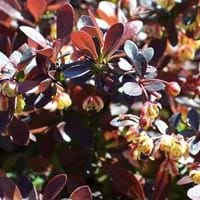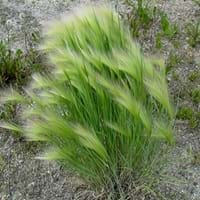Life Span
Perennial
Perennial
Origin
Japan
North America, South America, Europe, Southern Africa, Asia
Types
not available
Not Available
Habitat
All sorts of environments
Cultivated Beds
USDA Hardiness Zone
4-8
Not Available
AHS Heat Zone
8-5
Not Available
Sunset Zone
A3, 2b, 3a, 3b, 4, 5, 6, 7, 8, 9, 10, 11, 12, 13, 14, 15, 16, 17, 18, 19, 20, 21, 22, 23, 24
Not Available
Habit
Oval or Rounded
Not Available
Minimum Height
Not Available
Minimum Width
Not Available
Flower Color
Yellow, Yellow green
Green
Flower Color Modifier
Not Available
Bicolor
Leaf Color in Spring
Crimson, Dark Red
Green, Light Green, Gray Green
Leaf Color in Summer
Dark Red, Bronze
Light Green
Leaf Color in Fall
Red, Dark Red, Bronze
Not Available
Leaf Color in Winter
Not Available
Not Available
Leaf Shape
Acuminate
Vertical
Plant Season
Spring, Summer, Fall, Winter
Not Available
Sunlight
Full Sun, Partial Sun
Full Sun
Type of Soil
Clay, Loam, Sand
Loam, Sand
The pH of Soil
Acidic, Neutral, Alkaline
Not Available
Soil Drainage
Average
Well drained
Bloom Time
Spring, Late Spring
Spring, Summer
Tolerances
Pollution, Drought, Salt, Soil Compaction
Drought
Where to Plant?
Ground, Pot
Ground
How to Plant?
Cuttings
Divison, Seedlings
Plant Maintenance
Medium
Medium
Watering Requirements
Average Water Needs
Average Water Needs, Do Not over Water
In Summer
Lots of watering
Lots of watering
In Spring
Moderate
Moderate
In Winter
Average Water
Average Water
Soil pH
Acidic, Neutral, Alkaline
Not Available
Soil Type
Clay, Loam, Sand
Loam, Sand
Soil Drainage Capacity
Average
Well drained
Sun Exposure
Full Sun, Partial Sun
Full Sun
Pruning
Prune if you want to improve plant shape, Remove damaged leaves, Remove dead branches, Remove dead leaves
No need to prune
Fertilizers
All-Purpose Liquid Fertilizer
Nitrogen
Pests and Diseases
Free of serious pests and diseases
wheat rust
Plant Tolerance
Drought, Pollution
Drought
Flowers
Insignificant
Not Available
Flower Petal Number
Single
Single
Edible Fruit
No
Not Available
Foliage Texture
Medium
Fine
Foliage Sheen
Glossy
Matte
Aesthetic Uses
along a porch, deck or patio, Borders, Cottage Garden, Informal Hedge, Ornamental use
Showy Purposes
Beauty Benefits
Not Available
Not Available
Environmental Uses
Air purification
Air purification
Medicinal Uses
No Medicinal Use
Swollen eyelids
Part of Plant Used
Not Available
Root, Seeds
Other Uses
Showy Purposes
Roasted seed is used as a coffee substitute, Used as a cereal in making bread, porridge
Used As Indoor Plant
No
No
Used As Outdoor Plant
Yes
Yes
Garden Design
Container, Edging, Foundation, Hedges, Mixed Border, Rock Garden, Wall
Cutflower, Dried Flower/Everlasting, Edible, Wildflower
Botanical Name
BERBERIS thunbergii f. atropurpurea 'Crimson Pygmy'
HORDEUM jubatum
Common Name
Japanese Burberry
Foxtail Barley, Wild Barley
In Hindi
crimson pygmy
Foxtail Barley
In German
crimson pygmy
Mähnengerste
In French
crimson pygmy
Foxtail Barley
In Spanish
crimson pygmy
La cebada de cola de zorra
In Greek
crimson pygmy
αλωπέκουρου Κριθάρι
In Portuguese
crimson pygmy
Foxtail Barley
In Polish
crimson pygmy
włośnica Jęczmień
In Latin
crimson pygmy
Hordeum foxtail
Phylum
Magnoliophyta
Magnoliophyta
Class
Magnoliopsida
Liliopsida
Order
Ranunculales
Cyperales
Family
Berberidaceae
Poaceae
Clade
Angiosperms, Eudicots
Angiosperms, Commelinids, Monocots
Tribe
Not Available
Hordeeae
Subfamily
Not Available
Pooideae
Number of Species
Not Available
Not Available
Difference Between Crimson Pygmy and Foxtail Barley
If you are confused whether Crimson Pygmy or Foxtail Barley are same, here are some features about those plants to help you choose better. Many people think that these two plants have the same characteristics, but one can see Crimson Pygmy and Foxtail Barley Information and learn more about it. Fertilizers required for proper growth of Crimson Pygmy are All-Purpose Liquid Fertilizer, whereas for Foxtail Barley fertilizers required are Nitrogen. Hence, one should know the basic difference between Crimson Pygmy and Foxtail Barley if you are planning to have them in your garden to enhance its beauty.
<
Flowering PlantsImportance of Crimson Pygmy and Foxtail Barley
Want to have the most appropriate plant for your garden? You might want to know the importance of Crimson Pygmy and Foxtail Barley. Basically, these two plants vary in many aspects. Compare Crimson Pygmy and Foxtail Barley as they differ in many characteristics such as their life, care, benefits, facts, etc. Every gardener must at least have the slightest clue about the plants he wants to plant in his garden. Compare their benefits, which differ in many ways like facts and uses. The medicinal use of Crimson Pygmy is No Medicinal Use whereas of Foxtail Barley is Swollen eyelids. Crimson Pygmy has beauty benefits as follows: Not Available while Foxtail Barley has beauty benefits as follows: Not Available.
Compare Facts of Crimson Pygmy vs Foxtail Barley
How to choose the best garden plant for your garden depending upon its facts? Here garden plant comparison will help you to solve this query. Compare the facts of Crimson Pygmy vs Foxtail Barley and know which one to choose. As garden plants have benefits and other uses, allergy is also a major drawback of plants for some people. Allergic reactions of Crimson Pygmy are Unknown whereas of Foxtail Barley have Pollen respectively. Having a fruit bearing plant in your garden can be a plus point of your garden. Crimson Pygmy has showy fruits and Foxtail Barley has showy fruits. Also Crimson Pygmy is not flowering and Foxtail Barley is not flowering . You can compare Crimson Pygmy and Foxtail Barley facts and facts of other plants too.





